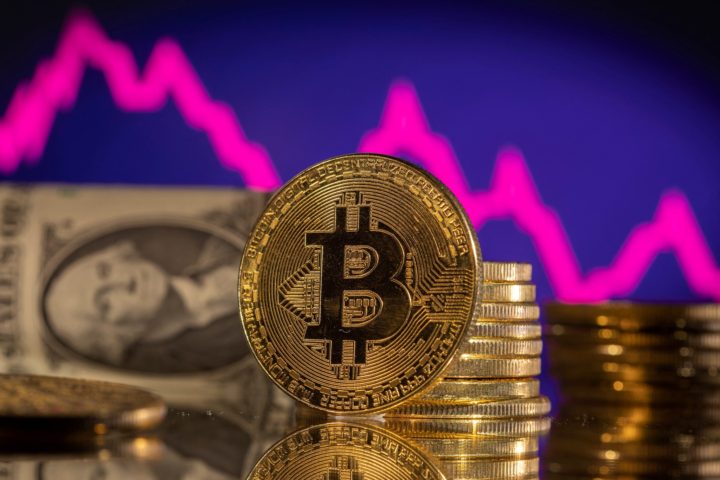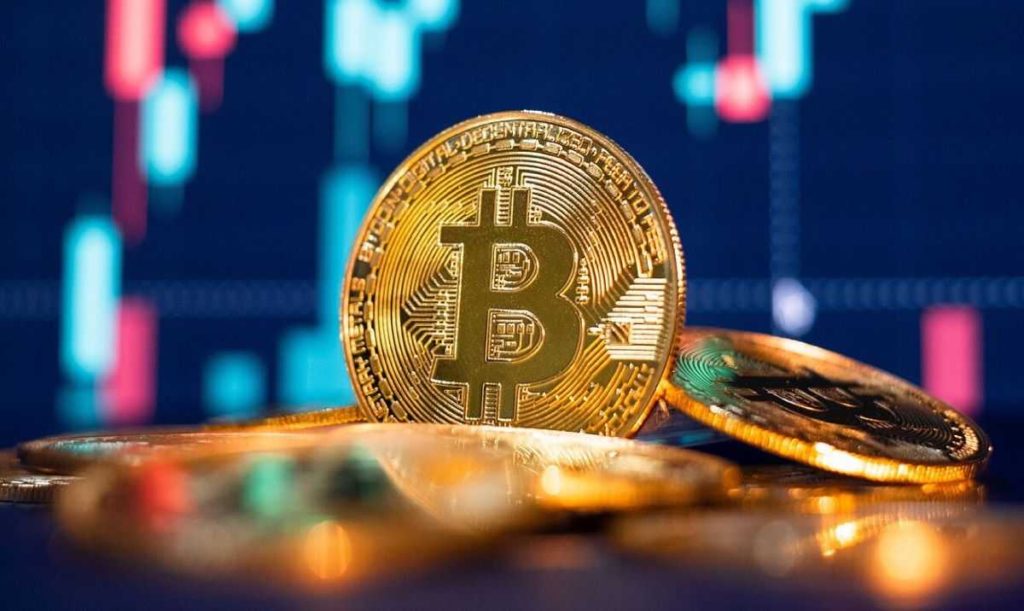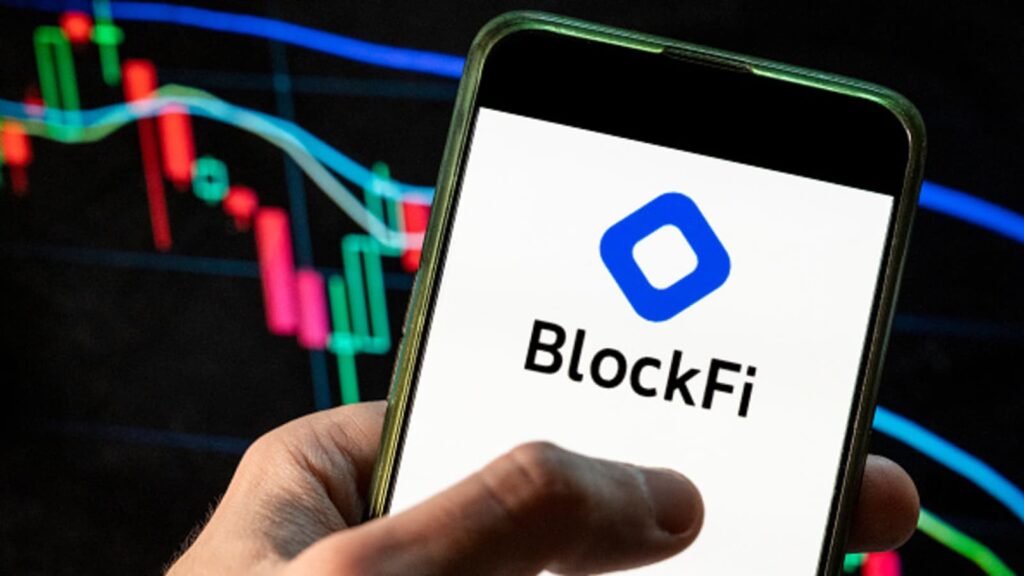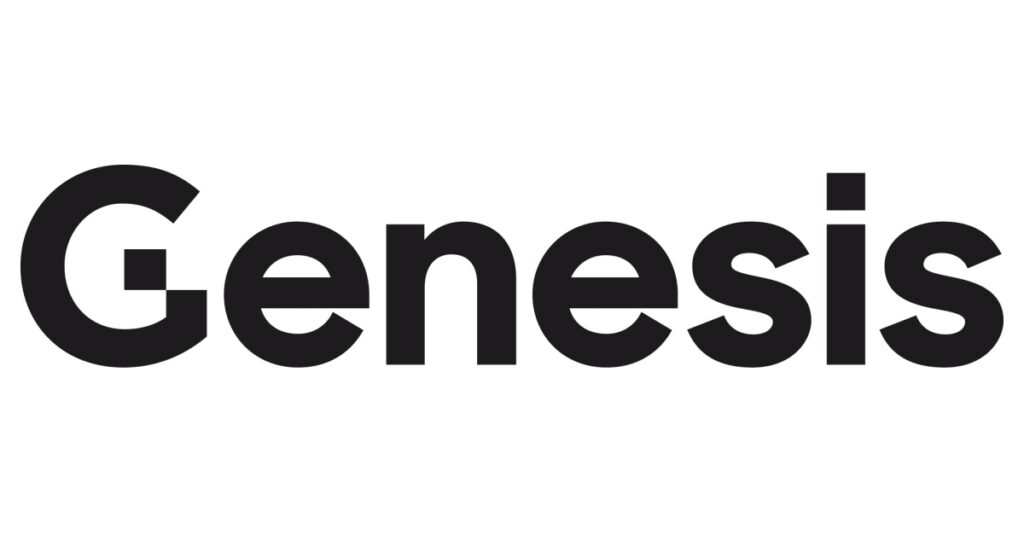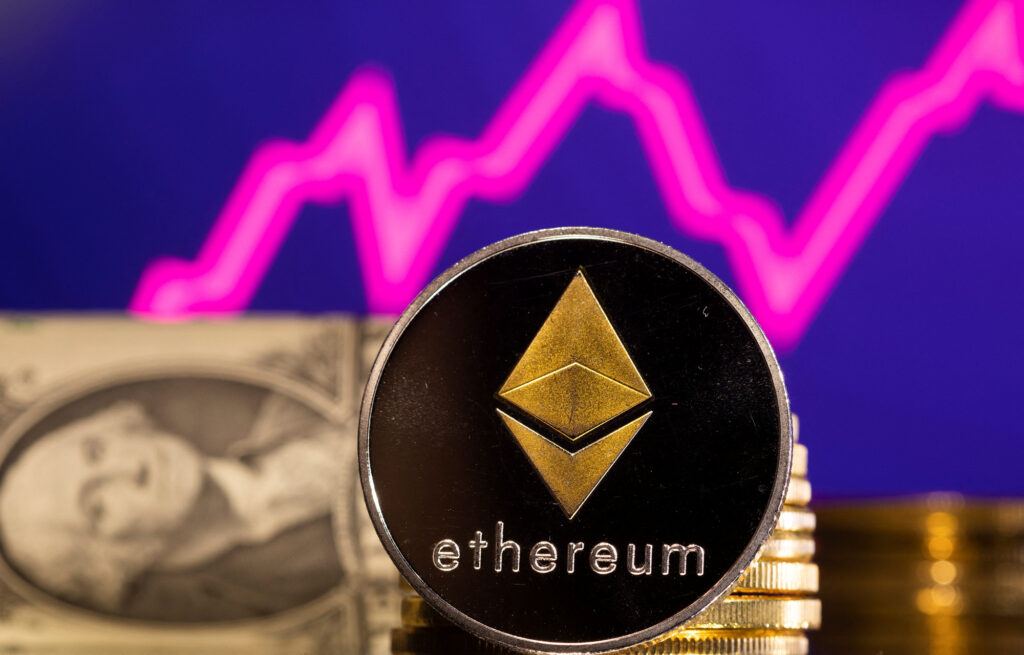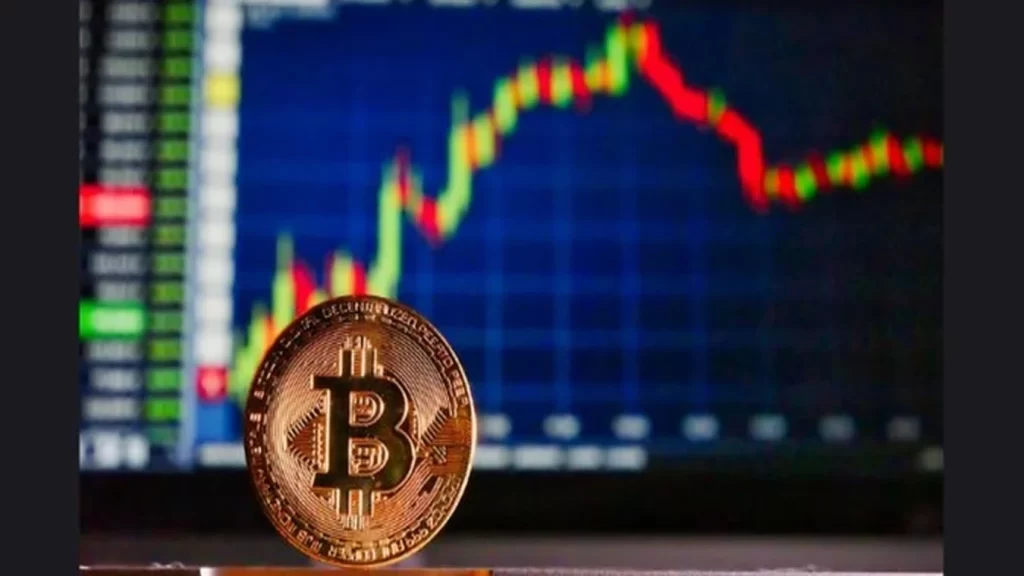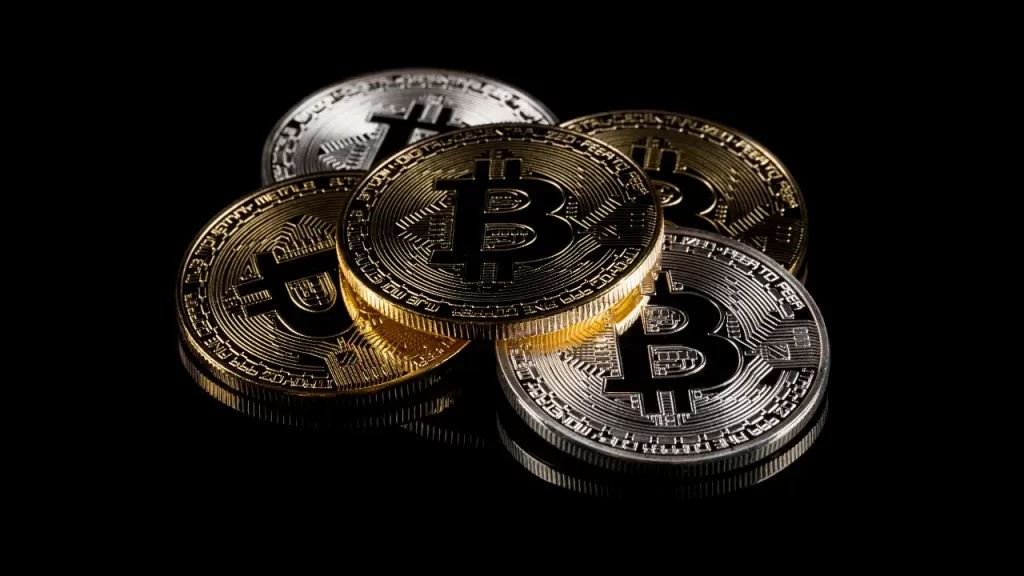In the month of August 2023, the crypto space witnessed a disturbing trend as malicious actors targeted digital assets, resulting in losses exceeding $45 million, as reported by CertiK, a blockchain security firm.
This adds to the year-to-date (YTD) total of $997 million in losses due to crypto-related incidents.
CertiK’s report sheds light on the breakdown of these losses, attributing $26 million to exit scams, $6.4 million to flash loan attacks, and $13.5 million to various exploits during August.
These combined attacks confirmed an overall loss exceeding $45 million, underscoring the vulnerability of the crypto landscape.
Several significant incidents stand out among the contributors to this substantial amount of loss.
The attack on the Zunami Protocol resulted in losses of $2.2 million, while the Exactly Protocol exploit took a toll of $7.3 million.
Additionally, the PEPE withdrawal incident inflicted a staggering $13.2 million in losses, revealing the multifaceted nature of threats facing the crypto community.
Throughout 2023, CertiK’s data reveals a disturbing upward trajectory in losses attributed to exploits, hacks, and scams.
This year alone, the accumulated losses exceed $997 million. Among these losses, flash loan attacks accounted for approximately $261 million, exit scams amounted to over $137 million, and exploits constituted a staggering $596 million.
Despite the grim statistics, it is noteworthy that the losses in August exhibited a relative decrease when compared to the previous month. In July 2023, Web3 data outlet De.Fi recorded a total loss of approximately $486 million.
READ MORE: South Korean Parliamentary Subcommittee Rejects Expulsion Motion Over Cryptocurrency Controversy
The Multichain exploit, a significant contributor, alone accounted for around $231 million of this total. Following these unfortunate events, Multichain made the difficult decision to halt its operations on July 14 due to a lack of operational funds and alternative sources of information.
The company cited the inability to communicate with its CEO, who had been detained by Chinese authorities, as a significant impediment to its operations.
In summary, the crypto space faced substantial losses of more than $45 million in August 2023 due to malicious activities, contributing to a year-to-date total of over $997 million in losses.
Despite a slight decline from the previous month, these losses underscore the pressing need for enhanced security measures within the crypto industry to protect against a range of threats, including exit scams, flash loan attacks, and exploits.
Other Stories:
BlockFi Advances Fund Recovery Efforts with Court Application
What’s New in Crypto Staking This Year
Bitcoin Holds Strong Above $27,000 as Traders Maintain Bullish Outlook
Staking, the act of locking one token into a smart contract to earn the same or a second token as reward, is one of the industry’s oldest use cases. It sounds so simple, and yet this act has proven the key to securing blockchain networks worth billions of dollars, all through a bond system that incentivizes working for the collective good.
In 2023, staking is more vital than ever thanks to PoS becoming the dominant consensus mechanism across L1 and L2 coupled with the rise of staking derivatives that are unlocking deeper liquidity onchain. With innovation continuing apace, you can be forgiven for having missed some of the key staking developments that have occurred in crypto this year. Here’s what’s new – and what’s still to come in the world of onchain staking.
The Rise of Restaking
One of the most powerful new capabilities to emerge from staking is restaking: the ability to use the same stake to secure multiple protocols. EigenLayer is at the forefront of this trend, pioneering a solution that allows staked ETH to be used to safeguard cryptoe-conomic activity on other chains. One of the year’s most hyped projects, EigenLayer is opening in phases, causing maximum FOMO whenever the ETH staking cap is raised. Aided by airdrop rumors, expect the interest in Eigen to rise to a crescendo in Q4.
To Stake or Not to Stake
If staking is a net good for crypto ecosystems, why is it so controversial with lawmakers? It basically comes down to the rewards that stakers can earn: some financial regulators, the SEC in particular, believe this makes staking tokens potential securities and that exchanges should be barred from offering this service. In the US, exchanges have been forced to wind up their staking programs this year, but all is not lost. Recent court cases, not least Grayscale’s appeals win against the SEC, have given the industry confidence to fight back against regulators. Don’t be surprised if staking becomes de rigueur in the US once more in the near future.
Babylon Sets Out Its Stake
What’s Bitcoin got to do with staking? It is, after all, the primary network to have stubbornly clung to Proof of Work all these years, with no signs of it pulling an ETH and embracing PoS. Be that as it may, Bitcoin may have a future to play in securing Proof of Stake chains according to Babylon. The team behind Babylon network have released a lite paper that details the first ever trustless and self-custodian BTC staking protocol that can be used by PoS chains.
Like the restaking proposed by EigenLayer, Babylon’s litepaper proposes using a non-native asset to secure other chains. This solves problems associated with finding sufficient collateral to secure emerging networks. Led by Babylon founder David Tse and his research team, the paper’s authors propose a cryptographic scheme that harnesses Bitcoin’s scripting language to secure PoS chains.
Ethereum Staking on Demand
US exchanges might have had to rein in their staking programs, but other entities are expanding theirs. Crypto.com has rolled out onchain staking for ETH, SOL, and DOT. Meanwhile, Bitget Wallet has launched its own ETH staking service with gas fee subsidies to reduce costs for users.
Elsewhere, in Dubai, custodial crypto staking is now available after the Virtual Asset Regulatory Authority (VARA) revised its Custody Services Rulebook. Finally, back in the US, the IRS has declared staking rewards as taxable income. While no one relishes paying more tax, the clarity this brings will allow more US citizens to participate in staking in knowledge of their total liabilities.
Bitcoin is maintaining its recent gains, as traders remain optimistic about the bullish trajectory of its price. Despite briefly retreating from the highs above $28,000, the cryptocurrency has not experienced a complete retrace of its recent upward move.
Encouragingly, Bitcoin’s price action on lower timeframes is being supported by a crucial moving average, effectively safeguarding the $27,000 mark.
This trend is highlighted by data from Cointelegraph Markets Pro and TradingView.
Of particular significance is the resilience displayed by BTC/USD in adhering to a long-term trend line that was previously lost as support in August.
This trend line corresponds to the 200-day exponential moving average (EMA), positioned at $27,180.
Although there were instances where hourly candle closures fell below this level toward the end of August, such occurrences failed to initiate a significant breakdown.
Instead, Bitcoin remains closely aligned with the 200-day EMA as the month concludes.
Prominent trader Moustache, known for insights on market trends, noted the positive development, observing that Bitcoin has reclaimed the daily EMA 200-Line.
Expressing confidence in this trend, Moustache dismissed the likelihood of a more favorable entry point occurring in the near future.
This view contrasts with the bearish outlook propagated by various reputable sources, many of whom anticipate a return to levels as low as $25,000.
READ MORE: Digital Currency Group Reaches Agreement with Genesis Creditors for Potential Recovery
However, trader Jelle echoes Moustache’s optimism by underscoring the importance of Bitcoin’s ability to sustain itself above the $27,000 threshold.
Jelle described the current market behavior as conducive to further upward movement, citing a brief spike followed by a shallow retrace and maintenance above a key high-timeframe (HTF) level.
In the midst of the ongoing discussions about Bitcoin’s performance, analyst Rekt Capital advised caution due to prevailing market conditions.
Some previously crucial bull market moving averages are currently acting as resistance, adding an air of uncertainty to the situation.
Further insight from Material Indicators, a monitoring resource, suggests that Bitcoin’s trajectory could complete a full circle.
For a renewed push towards higher local highs, a resurgence of bullish sentiment is deemed essential. The proprietary trading tools of Material Indicators identify $27,760 and $24,750 as pivotal levels to monitor on the upside and downside, respectively.
This assessment underscores the delicate balance between the potential for continued gains and the looming risk of a downward reversal.
Other Stories:
Grayscale Bitcoin Trust’s Negative Price ‘Discount’ Expected to Reverse by 2024
Federal Judge Overturns SEC’s Denial of Grayscale’s Bitcoin ETF
dYdX Unlocks $14.02 Million in DYDK Tokens for Community and Trader Rewards
Crypto lending company BlockFi, which had faced financial challenges, has taken a step forward in its fund recovery process.
Seeking approval from the United States Bankruptcy Court for the District of New Jersey, BlockFi has requested the transfer of “trade-only” assets from users’ accounts into stablecoins, enabling users to withdraw their funds.
These assets, including Algorand’s native token, Bitcoin Cash, and Dogecoin, have posed withdrawal difficulties.
To address this, BlockFi proposes a one-time conversion into stablecoins like Gemini Dollar (GUSD).
The application clarifies that these trade-only assets constitute less than 0.5% of the total U.S. wallet assets of BlockFi users.
Meanwhile, other trade-only assets like Cardano, Solana, and Avalanche are being held separately by BlockFi International.
Importantly, the request has received the backing of the committee of BlockFi creditors, a body recognized by the court.
Having filed for Chapter 11 bankruptcy protection in 2022, BlockFi joined other companies like FTX, Celsius Network, and Voyager Digital in facing financial turmoil.
READ MORE: Europe Welcomes First-Ever Bitcoin ETF
Last year, client fund withdrawals were temporarily suspended, but on August 16, the court granted permission for withdrawals after a nine-month hiatus.
The court has also provisionally endorsed BlockFi’s restructuring strategy.
The company’s focus is on recuperating funds from key entities such as Alameda Research, FTX, Three Arrows Capital, Emergent, and Core Scientific.
Notably, a recent legal move by BlockFi sought to prevent FTX from retrieving substantial funds to repay its creditors, marking the ongoing complexities in the process.
As of April 2023 estimates, BlockFi’s debt reached up to $10 billion, owed to over 100,000 creditors.
Among them, the three largest creditors were owed $1 billion collectively, while the defunct crypto hedge fund 3AC was owed $220 million.
In summary, BlockFi’s application to transfer trade-only assets into stablecoins is a significant stride towards refunding users.
Supported by a recognized creditors’ committee, this move aligns with BlockFi’s ongoing efforts to navigate its financial challenges and meet its debt obligations.
Other Stories:
Anticipation Grows as Bitcoin Halving Nears, Experts Predict Surge Beyond $100,000
Argo Blockchain Shows Resilience with 50% Reduction in Half-Year Losses
Shibarium Surpasses 100,000 Wallets in 24 Hours Post-Relaunch
Digital Currency Group (DCG), a prominent cryptocurrency industry venture capital firm, has reached a preliminary agreement with creditors of its cryptocurrency lending subsidiary, Genesis.
According to a court document released on August 29, if the revised plan is sanctioned, unsecured creditors could potentially recover between 70% and 90% of the equivalent United States dollar value.
The revised plan also offers the possibility of recovering 65% to 90% on an in-kind basis, dependent on the specific digital asset denomination.
In a statement to Cointelegraph, DCG expressed satisfaction in reaching a preliminary agreement with both Genesis and the Unsecured Creditors Committee.
This agreement establishes the groundwork for a comprehensive resolution of the claims within the Genesis Chapter 11 Cases, aiming to provide significant recovery opportunities for creditors.
The formalized agreement will be documented and presented to the bankruptcy court for ultimate approval, aligned with the confirmation of a chapter 11 plan.
READ MORE: Former FTX CEO Sam Bankman-Fried’s Legal Team Deems Trial Preparations Inadequate
In order to address its existing obligations to debtors, which encompass a $630 million obligation in unsecured loans maturing in May 2023, as well as a $1.1 billion commitment under an unsecured promissory note due in 2032, DCG is planning to enter into novel debt facilities and a partial repayment arrangement.
These liabilities encompass a first-lien facility with a two-year maturity totaling $328.8 million, along with a second-lien facility with a seven-year maturity totaling $830 million.
Additionally, DCG has agreed to make $275 million in payments in installments before the effective date of the plan, in accordance with the terms of the partial repayment agreement outlined in the filing.
Genesis, along with numerous other crypto lending entities, faced the impact of the extensive bear market in 2022, resulting in the filing for bankruptcy in January 2023.
The company found itself indebted to its top 50 creditors with a sum exceeding $3.5 billion, which included notable firms like Gemini and VanEck’s New Finance Income Fund.
In prior reports, Genesis suspended withdrawal operations in mid-November 2022, attributing the decision to unparalleled market turbulence caused by the collapse of the FTX crypto exchange.
The company cited an unexpectedly high volume of withdrawals that surpassed its available liquidity as a consequence of this incident.
Other Stories:
Hashdex Challenges Status Quo with Innovative Approach in Pursuit of Bitcoin ETF Approval
Three Former Team Members Accused of $16 Million Theft from Pepecoin (PEPE) Multisig Wallet
Right now, it seems that the sporting sector is undergoing a huge transformation. A lot of this comes down to the lasting impact of the pandemic. Even though it has caused a lot of challenges for the industry, it has also sped up the adoption of new technologies. This can include the blockchain. At the end of the day, the use of blockchain technology has become very popular within the sporting industry and this offers new opportunities for clubs and fans.
When you break everything down, you will soon see that blockchain technology is a decentralised ledger and it is able to provide a lot of transparency and security for a number of transactions. The tech has a lot of applications too, including sports. You can use it for ticket sales as well as fan engagement.
Opportunities to Generate Revenue
One very important thing to remember is that clubs now have the chance to generate as much revenue as they want. When utilising blockchain technology, European teams have been able to gain over $200 million in revenue, from tokens that are sold on Socios.
This new stream of revenue has helped clubs to recover some of the losses that they might have incurred during the pandemic. Another area where blockchain could possibly revolutionise the area is through sports betting. By using blockchain, sports can become way more transparent. It can also be used to eliminate the risk of fraud, and any negative stigma that might be associated with sports betting. This helps to provide a much safer environment for fans.
Transforming Fan Engagement
One thing to know about football and football live stream providers is that blockchain could revolutionise the way things are done. Web3 is now coming out and blockchain technology could easily drive the adoption of a way more decentralised internet. The sports sector really is one of the leading industries that is able to benefit from the power of blockchain too which is great.
Juan Mata has been exploring the blockchain for quite some time and he has also explored a lot of charitable causes as well. The Common Goal initiative looks to use blockchain as it encourages people to take part in various social organisations.
This happens across the world. Through the Common Goal, it seems that Mata is able to make the world a better place and he also wants to increase transparency where possible. He has the aim of being able to increase the trust that people have in the sport and this is great to say the least.
The Use of Blockchain in Sport
Right now, it would seem that blockchain has a lot of use within the sporting world. It is in the early stages but the potential is great. This kind of tech could well account for the opportunities present and it is being valued in the trillions. The sporting sector is increasing the surface of possibilities and it is phenomenal to think about what blockchain technology could bring.
In conclusion, it would seem that the use of blockchain in terms of fan engagement could well be transforming the sporting industry. It’s a win-win for both clubs and it is also a w
in for fans too. It offers a new transformative landscape and you also have the emergence of Web3 as well. This is blockchain technology that drives the adoption of a user-focused internet. The sporting industry is one of the many that are able to benefit from the power of blockchain tech and it is of no surprise to see that things are only going to grow from here.
Who knows what the future holds or what is going to happen next, but with that in mind, more has to be done to make sure that the sector keeps on track with its current pacing.
The parent firm behind the subscription service OnlyFans has disclosed its cryptocurrency investments, joining the trend of revealing digital asset holdings.
The company, Fenix International, recently reported that it allocated around $20 million into Ether during the year 2022.
In its financial filing to the UK corporate registry on August 24, Fenix International detailed its acquisition of approximately $19.9 million worth of ETH between 2021 and 2022.
However, due to the overall market downturn in the cryptocurrency sphere throughout the previous year, the total value of its Ether holdings plummeted by $8.5 million by the end of November 2022.
By November 30, 2022, when the value of ETH was pegged at $1,295 per unit, Fenix International’s Ethereum assets were appraised at $11.4 million.
Despite an initial setback in its cryptocurrency investment endeavors, the platform achieved notable expansion in the reporting period culminating in November 2022.
The official filing cited a 16.6% rise in revenue, climbing from $4.8 billion in 2021 to $5.6 billion in 2022.
Furthermore, the platform, primarily recognized for adult entertainment content, observed a significant uptick of 47% in creators and a 27% increase in total subscribers.
This isn’t the company’s maiden voyage into the world of digital assets. In February 2022, Fenix International enabled verified creators to replace their profile pictures with NFTs based on the Ethereum blockchain.
In a parallel development, former executives from OnlyFans introduced a novel celebrity trading card platform named Zoop in June 2022.
READ MORE: Co-founder of Tornado Cash Cryptocurrency Service Released on Bail
Running on the Ethereum scaling solution Polygon, Zoop provided a platform for users to exchange 3D digital celebrity playing cards.
Simultaneously, the revelation of Fenix International’s Ether holdings coincided with adult content creators flocking to Friend.tech, a freshly established decentralized social media platform within the cryptocurrency realm.
This migration was driven by the desire to capitalize on the emerging excitement surrounding cryptocurrency.
In conclusion, the parent company of OnlyFans, Fenix International, has made its cryptocurrency investments public, indicating a substantial allocation of approximately $20 million into Ether in 2022.
Despite facing initial challenges in the crypto market, the platform experienced noteworthy growth in terms of revenue, creators, and subscribers.
This move into cryptocurrency aligns with the company’s previous initiatives involving digital assets.
Other Stories:
IRS Proposes Simplified Reporting for Digital Asset Taxes, Faces Industry Scrutiny
Former Worldcoin Insider Alleges Unlawful Practices and Mismanagement
Bitcoin’s $20,000 Value Holds Steady Over Six Years When Adjusted for Inflation
The downward trajectory in the cryptocurrency market appears to be reaching its conclusion, as per recent research by JPMorgan.
The bank’s analysis suggests that the majority of long position liquidations have concluded, pointing towards a potential deceleration in the selling trend.
Based on information from a Bloomberg report, JPMorgan’s experts anticipate that the era of liquidations is mostly in the past.
This projection draws from the assessment of open interest in Bitcoin futures contracts on the Chicago Mercantile Exchange (CME), which serves as an indicator of market sentiment and the potency of price movements.
A decline in Bitcoin’s open interest is interpreted by analysts as a possible indication of waning price momentum: “As a result, we see limited downside for crypto markets over the near term.”
The recent dip in crypto prices can be attributed to waning optimism surrounding regulatory advancements in the United States.
On August 26, Bitcoin hovered around $26,000, marking an 11.27% decrease over the past month.
Bitcoin’s value was buoyed in previous months by favorable developments, including applications for the introduction of the first U.S. exchange-traded funds (ETFs) linked to Bitcoin’s actual price.
READ MORE: Co-founder of Tornado Cash Cryptocurrency Service Released on Bail
Prominent names such as BlackRock, Fidelity, ARK Invest, and 21Shares were among those awaiting regulatory approval.
In a positive turn, Ripple Labs secured a partial victory against the U.S. Securities and Exchange Commission (SEC).
Nevertheless, this optimism is fading as traders await crucial decisions regarding Bitcoin ETFs and the SEC’s appeal against Ripple, rekindling uncertainty.
These circumstances collectively contribute to a fresh wave of legal ambiguity for the cryptocurrency market, rendering it sensitive to forthcoming events.
The market’s decline has also been influenced by external factors, encompassing increasing U.S. real yields and apprehensions concerning China’s economic growth.
Other Stories:
Former Worldcoin Insider Alleges Unlawful Practices and Mismanagement
Bitcoin’s $20,000 Value Holds Steady Over Six Years When Adjusted for Inflation
IRS Proposes Simplified Reporting for Digital Asset Taxes, Faces Industry Scrutiny
Attorneys representing former FTX CEO, Sam Bankman-Fried (SBF), have criticized the authorities’ efforts, stating that the accommodations provided were inadequate for his October criminal trial preparation.
In a filing made on August 25 to the United States District Court for the Southern District of New York, SBF’s legal team expressed dissatisfaction with the prosecutors’ proposed plan, which allowed SBF access to discovery materials before the trial.
They argued that the U.S. Justice Department handed over approximately four million pages of discovery materials on August 24, leaving SBF with a substantial amount of documents and data to review before his trial.
The filing declared that only temporary release could sufficiently address these challenges and protect Bankman-Fried’s right to actively engage in his defense.
The document highlighted that prior to his bail being revoked, SBF dedicated 80-100 hours weekly to scrutinizing the extensive discovery materials and generating detailed analyses that he continuously updated and shared with his lawyers.
Following his extradition from the Bahamas and his arraignment in the U.S. in December 2022, Bankman-Fried had been out on a $250 million bond for about eight months.
However, after allegations of witness intimidation emerged involving former Alameda Research CEO Caroline Ellison, a federal judge revoked his bail.
Consequently, since August 11, approximately two months ahead of his first criminal trial, SBF has been held at the Metropolitan Detention Center in Brooklyn.
READ MORE: Galaxy Digital Poised to Manage FTX’s Recovered Cryptocurrency Holdings
Since the revocation of his bail, SBF’s legal team has been advocating for more lenient restrictions, aiming to secure time outside of jail for trial preparation.
In response, a judge granted him around seven hours in the New York courthouse cell block attorney room on August 22.
Additionally, an order was issued permitting SBF access to the same space along with one laptop and a wifi-enabled device, provided a 48-hour notice was given by his attorneys.
SBF’s legal representatives stressed that he requires constant access to an internet-connected computer to review discovery documents, research contextual information online, draft and revise analytical work related to the materials, and share these documents and analyses with his legal team.
They contended that the government’s current plan fell significantly short of these requirements.
SBF’s first trial, set for October 3, will involve seven charges linked to fraudulent activities concerning user funds at FTX and Alameda Research.
His second trial, scheduled for March 2024, will encompass five additional criminal charges.
Court documents revealed that Bankman-Fried’s defense may involve claiming that his actions were carried out “in good faith” based on advice from Fenwick & West lawyers and FTX’s in-house counsel.
These alleged illegal actions included directing the automatic deletion of certain communications between FTX and Alameda employees.
Other Stories:
XRP Faces Investor Sell-Off as Whale Transfers 29 Million Tokens Amid Price Dip
Binance’s Russian P2P Crypto Exchange Renames Sanctioned Banks Amidst Controversy
Bitcoin’s Evolution Accelerates: Recursive Inscriptions Unveil New Horizons Beyond Cryptocurrency
Nearly six years after initially reaching the $20,000 milestone, Bitcoin’s value has remained at that level when adjusted for inflation.
Data from various sources, including the U.S. Inflation Calculator, indicates that the performance of BTC’s price has essentially stagnated since 2017.
While Bitcoin has fluctuated around the $20,000 mark since marking it as an all-time high in 2017, its value against the USD surged as high as $69,000 during the interim period.
However, considering inflation, the narrative around BTC’s price action takes on a different hue.
As of August 25, 2023, the value of $20,000 worth of BTC purchased in 2017 has appreciated to $24,942.
To put it differently, the current spot price of Bitcoin, which is $26,050 according to data from Cointelegraph Markets Pro and TradingView, reflects six years of relatively unchanging BTC price dynamics.
BTCGandalf, the anonymous marketing officer at Bitcoin mining firm Braiins, remarked on this development during the week, acknowledging that, when adjusted for inflation, Bitcoin is only slightly above its 2017 market peak.
Commentators on X platform further observed that this calculation was based on official inflation statistics, implying that in actuality, the value of BTC/USD might even be lower than during its previous cycle peak.
Some humorously concluded that these figures underscored Bitcoin’s capacity to serve as a store of value.
BTCGandalf added that they were taken aback by the limited attention this matter had received.
Simultaneously, the United States’ national debt has reached a staggering $32.7 trillion, while concerns about U.S. inflation continue to be of paramount interest for risk-focused investors, including those involved in cryptocurrencies.
With official data signaling a deceleration in inflation, hopes are pinned on the Federal Reserve to align economic policies with the perceived reality.
READ MORE: Bitget Cryptocurrency Exchange Enhances KYC Procedures to Align with Global Regulations
On August 25, Fed Chair Jerome Powell is slated to present a policy statement at the annual Jackson Hole Economic Symposium, an event that is being closely monitored by those anticipating a deviation from Bitcoin’s current price status quo.
Keith Alan, co-founder of monitoring resource Material Indicators, indicated a preparedness for potential lows and volatile fluctuations, suggesting that a double bottom could potentially set the stage for recovery, despite the possibility of further downward movement.
A corresponding chart depicted the BTC/USD order book on Binance, highlighting a scarcity of substantial liquidity beyond $25,000, thereby increasing the likelihood of rapid and significant price shifts.
Other Stories:
Ordinal Inscriptions Maintain Dominance on Bitcoin Network Despite Price Dip
New DeSo Network Friend.tech Generates Over $1 Million in 24 Hours
UK Prime Minister Allocates £100 Million to Acquire Computer Chips for AI Advancement

